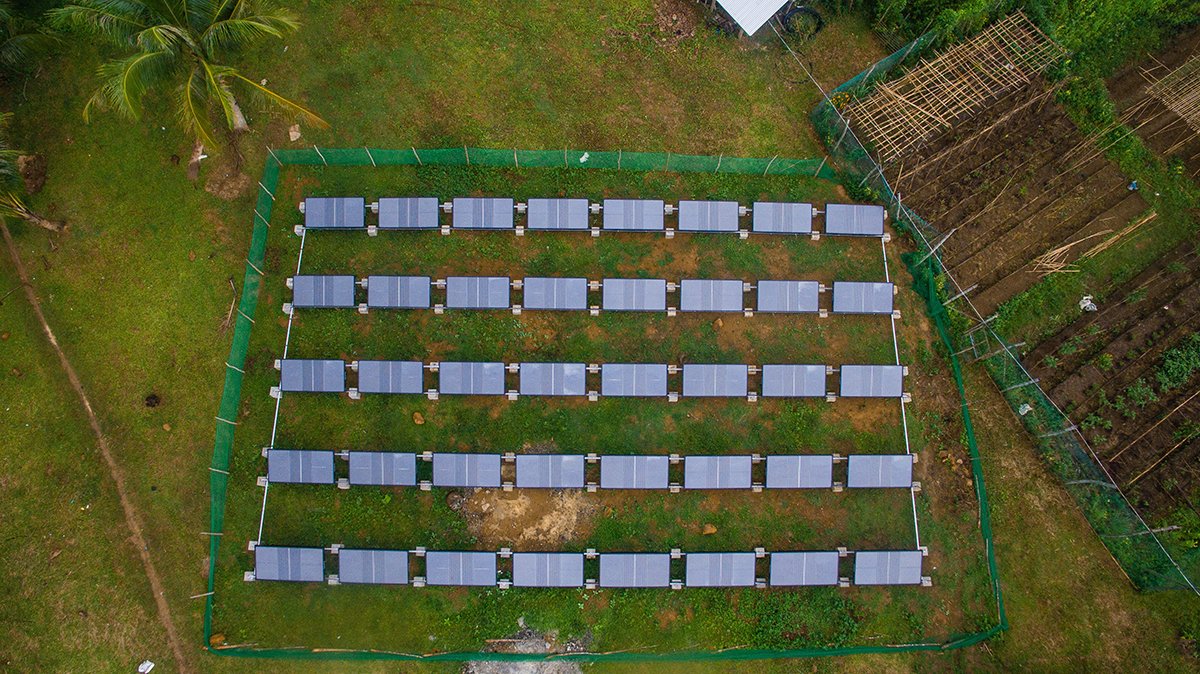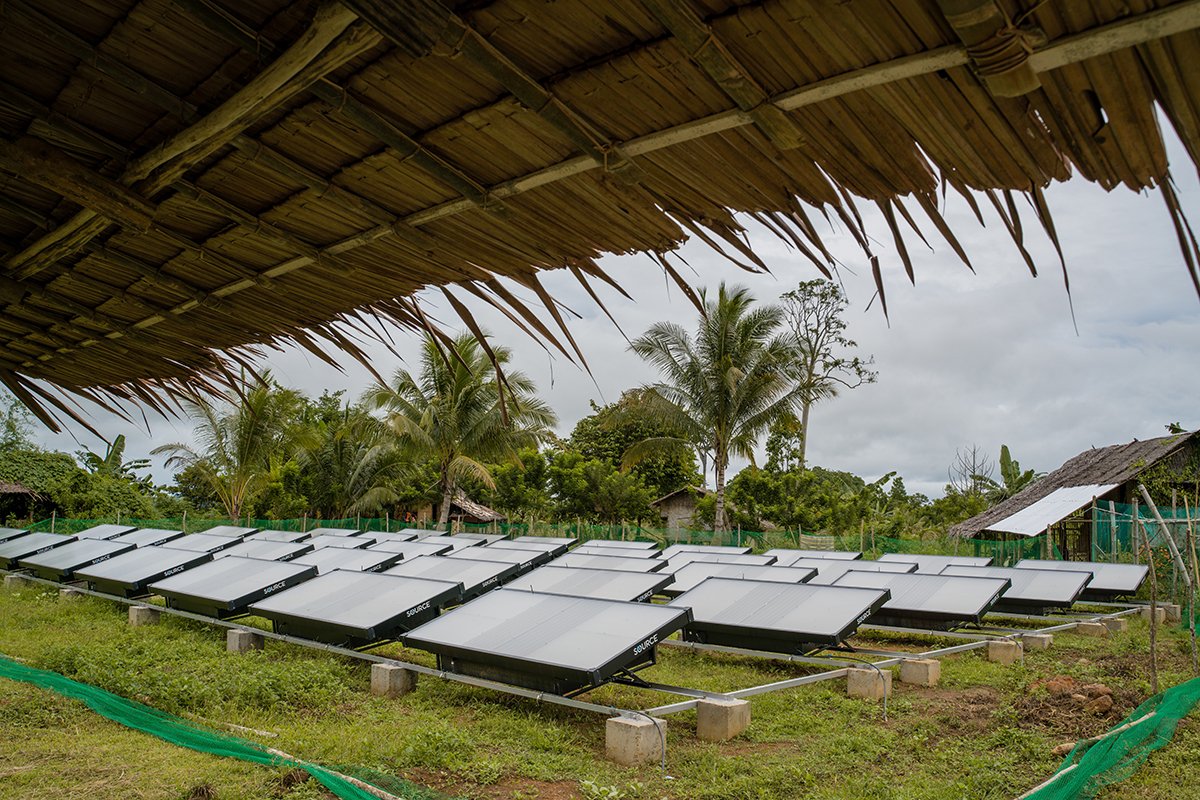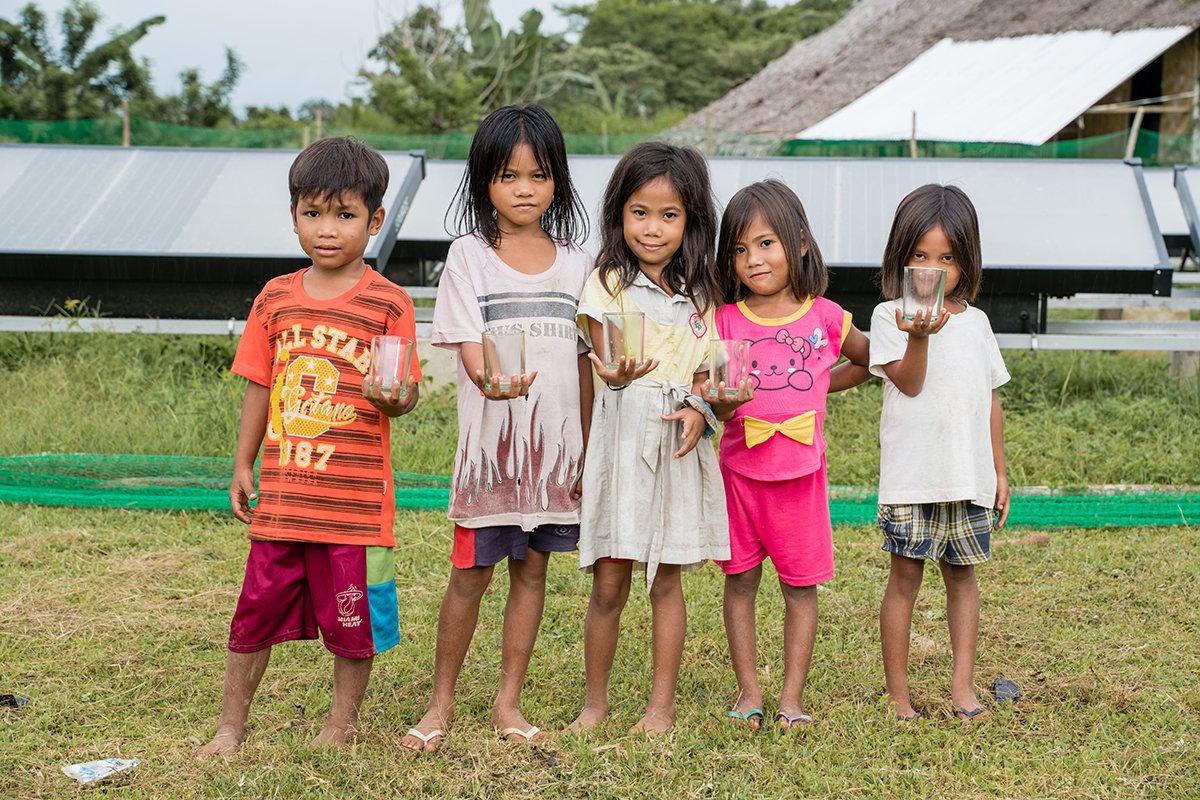There’s water for cooking, cleaning, and household chores, and then there’s bottled water for drinking. The Indigneous Binta’t Karis people in the Palawan province of the Philippines — like billions of others worldwide — had to follow this rule because local water supplies would make them sick if they drank from them.
These days, however, the community has an abundant and renewable source of crystal clean drinking water. That’s because Source Global (formerly Zero Mass Water) partnered with Conservation International earlier this year to install hydropanels — atmospheric water generators that rely on solar energy — near the local school to generate clean drinking water for years to come.
The project is a marvel of engineering and sustainable development that provides a roadmap for empowering communities in an increasingly water-stressed world.

“We see huge potential for us and other technologies to reframe the way we look at water solutions in remote communities,” Rob Bartrop, chief revenue officer at Source Global, told Global Citizen. “One being places that don’t have access to water pipes. Two being places that do have access to pipes but don’t necessarily have quality or resilient water to flow through those pipes. And three, to replace the half a trillion plastic bottles used to provide water to communities.”
Remote Communities
The Binta’t Karis project is a case study in the advantages of hydropanels.
Located deep in the mountains of the island of Palawan, the Binta’t Karis people have faced many challenges to water access.
Because they’re hundreds of miles away from the nearest major city, they had no access to government water supplies and the cost of installing traditional water systems in the small community didn’t make sense financially.
As a result, people had to either buy bottled water, which has led to a growing plastic pollution crisis, or collect it from a local river in heavy containers, which could lead to waterborne illnesses if consumed.
Around 80% of illnesses in developing countries are linked to poor water and sanitation. Throughout the Binta’t Karis community, waterborne illness was a regular problem and particularly affected children and immuno-compromised populations.
When Conservation International reached out to Source Global to collaborate on a new project, it suggested the Binta’s Karis community in Palawan and noted that the school would be a particularly good spot for an installation.
But when the project was scheduled to proceed, the COVID-19 pandemic intervened.

“We then faced the challenge of installing this project through a local and national lockdown in the Philippines,” Bartrop said. “We were able to use local installation labor and partners in the Philippines and Palawan to do this remotely.
“We shipped the goods from the US but we were able to use fully local installation teams,” he added. “That allowed us to navigate the COVID problem and provided long-term employment opportunities.”
Now that the project is installed, Bartrop said, it’s become an essential part of the community. The panels produce more than 40,000 liters of clean water every month, which is roughly 40 20-packs of water bottles every day. Over the course of the project’s lifetime, 2 million water bottles will be averted. For a small community, this new supply of water largely covers the demand, quenching thirst and fueling good health.
“They love the taste of the water,” he said. “They already see the value both from everyday life and also conservation from the plastic offset perspective.”
How Hydropanels Work
Source Global Hydropanels look like solar panels, but they're really atmospheric water generators.
The panels harvest the sun’s energy to power fans that pull moisture from the air. This water vapor is then gathered into a reservoir of clean water held within the panel, and then minerals are added for taste. Water is then transported for easy consumption.
The panels are able to generate water in even the driest conditions in the world.
Source is currently installing hydropanels throughout Navajo Nation in the Southwestern United States, for example, where tens of thousands of families lack access to clean water and drilling for new wells is an arduous and fraught process because so much of the groundwater throughout the reservation is contaminated.
More Than Clean Water
The benefits of clean water are immediately apparent in the Binta’t Karis community.
Waterborne illnesses are down, Bartrop said, so people are more healthy on average. As a result, people are more likely to attend school and go to work.
For children, protection from waterborne illnesses means they no longer have to worry about falling behind in school. Globally, children living in rural areas often fall behind their peers in urban areas because of issues like lack of access to water, electricity, and transportation to school. These disparities have increased amid the COVID-19 crisis as schools shut down and families have to engage in remote learning. By expanding access to clean water, the urban to rural education gap can partly close.
The gender gap around water is also able to close. In communities around the world, including among the Binta’t Karis, girls and women are usually tasked with fetching water, which can take up hours of their day and prevent them from going to school or engaging in economic enterprises.

Finally, the new source of drinking water cuts down on water bottle use, which saves people money and limits pollution. Globally, plastic pollution has heavily contaminated land and marine environments, threatening the future viability of entire ecosystems. The Philippines faces especially severe plastic pollution and conservation efforts in Palawan have been threatened by plastic waste.
“So by removing [these obstacles] we’re not only freeing up more time for people to learn and work and do things that they choose to do, but we’re also protecting the cornerstone of their community which is this fantastic landscape,” Bartrop said.
The Future of Water
Mobile phones have helped rural and developing communities leapfrog, or skip, the installation of massive telephone lines and accompanying telecommunications infrastructure. Solar panels have helped these communities leapfrog centralized energy grids that rely on destructive fossil fuels.
Now hydropanels could help communities leapfrog costly and often unreliable water pipeline systems, according to Bartrop.
Decentralized and easy-to-install clean water solutions will play an increasingly vital role for countries facing the prospect of a growing water crisis.
Already, 2.2 billion people do not have access to safely managed drinking water sources.
The United Nations warns that water scarcity could affect 5.7 billion people by 2050 as climate change causes extreme droughts, pollution contaminates existing water supplies, and mismanagement of water supplies dries up rivers and reservoirs.
 Boys displaced from the eastern Yemeni district of Durahemi draw water from a well into jerry cans near the Red Sea port city of Hodeida on July 9, 2019.
Boys displaced from the eastern Yemeni district of Durahemi draw water from a well into jerry cans near the Red Sea port city of Hodeida on July 9, 2019.
Various cities aroud the world, including Cape Town and São Paulo, have had to impose water lockdowns in recent years to preserve rapidly dwindling water supplies.
This growing water crisis has led to a surge in bottled water consumption that in turns leads to plastic pollution.
Hydropanels could theoretically be installed in communities around the world, providing people with a guaranteed source of clean water, while also minimizing plastic pollution.
“We can compliment rainwater and well water and provide high quality, climate-proof drinking water at the household level that saves money, plastic, and allows people to go about their lives and work without stressing about water daily,” Bartrop said.